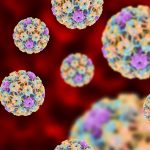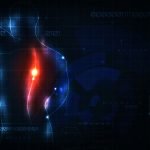Naturopathic Protocol for Podiatric Procedures
John Hahn, DPM, ND
As a practicing podiatric physician and surgeon for more than 30 years, I have been exposed to many forms of therapy for common foot conditions that were mostly allopathic in nature. Not until I was trained as a naturopathic physician at NCNM in Portland, Ore., did I realize the extent of effective care available to patients outside the allopathic model.
I have incorporated many naturopathic modalities in treating common podiatric conditions, with great success. I currently conduct a dual practice of naturopathic family medicine and podiatric medicine and surgery. I have found that by combining naturopathic treatment modalities with conventional podiatric care, patients experience faster relief of symptoms with fewer side effects.
This article shares some diagnostic and treatment modalities I have utilized successfully for the treatment of common conditions.
Diabetes Mellitus
As naturopathic physicians, we are faced with an ever-growing number of patients who have Type II diabetes mellitus and concomitant foot problems associated with this multi-system disease. This section introduces some treatment modalities peculiar to podiatry that can be incorporated into the naturopathic protocols for diabetes.
Peripheral Arterial Disease
Many well-documented studies show the benefits of IV chelation therapy with EDTA for the treatment of peripheral arterial disease associated with diabetes and foot ulcers.
I have successfully employed IV chelation therapy with EDTA for diabetic patients who have severely diminished peripheral pulses. Their diabetic ulcers have healed within a few months of therapy. One case in particular involved a patient who was scheduled for bilateral foot amputation by another physician. He sought a consultation with me to see if IV chelation therapy would be a viable alternative. On clinical examination, this patient had absent pedal pulses; they could not be heard utilizing an 8MHz Doppler. His skin was cold, dry and thin. He was alopecic from the knees to the toes bilaterally. He could not walk more than a quarter of a block without suffering from severe intermittent claudication, which stopped him in his tracks.
I advised a series of IV chelation treatments with EDTA to attempt to reestablish circulation to his feet and prevent the need for amputation. After approximately 10 chelation treatments, the patient had a clinically palpable pulse in the dorsalis pedis artery of both feet. He could walk more than two blocks without calf pain, and started to re-grow hair on his lower legs. The incorporation of this naturopathic modality for patients suffering from peripheral arterial disease is a valuable adjunct to other therapies that may be offered by the traditional medical community.
Peripheral Neuropathy
Peripheral neuropathy associated with diabetes may cause chronic pain and suffering for many patients. The prevalence of neuropathy reported in the medical literature varies widely, because the operational definition for neuropathy can be based on symptoms or various clinical parameters.
In podiatry, we have relied almost exclusively on the Semmes-Weinstein 10g monofilament as a diagnostic gold standard for identifying sensory neuropathy with loss of protective sensation. However, this instrument needs to be replaced regularly to provide a moderate level of accuracy.
In the United Kingdom and many medical centers worldwide, vibration perception threshold (VPT) testing is used in conjunction with other screening tools to identify loss of protective sensation (LOPS). VPT testing devices can be obtained from various medical supply houses in the U.S. They are accurate and will last for years, and have been evaluated extensively. In addition, large normative and diabetic populations have been tested.
Once painful peripheral neuropathy has been diagnosed, treatment options need to be considered. Typical protocols for allopathic podiatric therapy include the use of tricyclic antidepressants, such as amitriptyline HCl, or the selective serotonin and norepinephrine reuptake inhibitor (SSNRI) duloxetine. Treatment options also include gabapentin and pregabalin. These antidepressants and anti-seizure drugs have multiple adverse side effects, some of which include suicidal thoughts or attempts in young patients and adolescents, fatigue, dizziness, nausea and weight changes.
I prefer to treat peripheral neuropathy utilizing safe and effective naturopathic therapies, such as oral alpha-lipoic acid at 400mg tid along with acetyl-L-carnitine at 500mg tid. Clinical studies have demonstrated the effectiveness of this combination for the treatment of peripheral neuropathy and for assisting patients with short-term memory loss. I have found this to be very successful in reversing peripheral neuropathy in well-controlled Type II diabetics.
I also recommend that patients use a transdermal cream containing L-arginine. This semi-essential amino acid is a precursor to nitric oxide, which has been shown to control blood flow by relaxing the smooth muscle cells lining the blood vessels, thus causing vasodilation. Clinical studies have shown L-arginine to increase blood flow and the temperature of the foot, and to reduce the symptoms of neuropathy.
In addition, I recommend high-quality omega-3 fish oils, since studies have shown these to increase neuronal membrane fluidity and promote axonal and dendritic outgrowths.
Nail Care
Many toenail and fingernail pathologies can be successfully treated with naturopathic therapies. Onyxis, an ingrown nail, is a painful condition; an ingrown toenail is commonly seen. The etiology of onyxis is varied and many. The most common cause is due to an injury of the nail bed or matrix of the toe or finger, which causes the subsequent nail to grow in an irregular pattern. Once this deformity develops, no physical medicine modality or naturopathic remedy will correct and restore the nail to its normal architecture. The simplest and least painful method of treating a chronically ingrown and deformed toenail is removal of the offending portion of the nail. Not only will the patient experience immediate pain relief, but the possibility for infection is also reduced, since ingrown nails penetrate the skin, creating an entry for bacteria.
I have performed this procedure on several thousand patients with a relatively simple surgical technique called the phenol/alcohol matrixectomy. See the accompanying story, “Surgical Technique for Matrixectomy,” for details.
Painful Heels
Patients suffer from painful heels for a variety of reasons. The most common etiology is due to either plantar fasciitis or plantar heel spurs with plantar fasciitis. These conditions are generally found in patients who are obese. Original research studies published in the Journal of the American Podiatric Medical Association demonstrated that a body mass index higher than 25 is contributory to chronic heel pain. Obviously, weight loss through the use of a medical weight management program is of utmost importance to reduce the mechanical load on the plantar fascia and calcaneus. Obtaining a normal weight for frame size is essential in reducing the vertical load on the medial longitudinal arch of the foot and the subsequent strain of the plantar fascia from its origin on the calcaneus.
Heel pain in active children between 8 and 12 years of age may be due to a condition called Sever’s disease, or calcaneal apophysitis. This condition is a result of micro trauma to the growth plate of the calcaneus, which normally occurs in athletic activities that require a lot of jumping and running.
Clinical evaluation of the patient’s weight-bearing attitude will show whether the patient has a collapse of the medial longitudinal arch from a biomechanical fault, such as a compensated forefoot varus or rearfoot valgus deformity.
If these deformities are noted upon clinical examination, neutral position casts of the patient’s feet should be constructed. The casts should be sent to an orthotic laboratory for fabrication of a functional polypropylene device. These devices, worn in the patient’s shoes, should contain a medial groove to allow relaxation of the medial band of the plantar fascia when the patient is walking and standing. Naturopathic physicians are trained in orthopedics, and the recognition of biomechanical faults within the foot is in their training. Therefore, it is within the purview of naturopathic physicians to be able to prescribe custom-made orthotic devices for the treatment of foot deformities that cause abnormal pronation and depression of the medial longitudinal arch. These types of devices will help alleviate chronic heel pain from plantar fasciitis patients. Many orthotic laboratories will be happy to assist in the fabrication of these devices with instructional manuals and CD presentations.
Studies have shown the use of dorisflexory night splints to relieve up to 70% of pain for a patient with chronic heel pain. This simple mechanical device is applied to the affected foot at bedtime, and the patient sleeps with the device on. Dorisflexory night splints are available through most medical supply houses.
The use of either silicone or soft-rubber heel cups is an excellent physical modality for the relief of heel pain symptoms in some patients.If there is a high index of suspicion of a fracture, then appropriate x-rays need to be taken. In mild non-displaced fractures, an Aircast boot can be worn to offload the foot for six to eight weeks. In the case of Sever’s disease, an offloading boot may be worn with silicone heel cups to reduce the shock at heel contact when standing and walking. Avoidance of running activities is important to allow the apophyseal plate to heal.
In place of NSAIDs, I have utilized injectable homeopathic combinations for the treatment of plantar fasciitis. These injections do not have the same adverse effects as trigger point injections with steroids, and are very effective for the reduction of pain.
I have found that utilizing a natural anti-inflammatory from a combination of the extracts of hops, olive leaf, and rosemary leaf has been very effective in reducing a patient’s pain. Also, a newer natural combination containing extracts of rosemary, turmeric, ginger, holy basil, green tea, oregano, hu zhang, Chinese goldthread, barberry and skullcap is an excellent anti-inflammatory, since it affects NF kappa beta levels within the body.
Skin Lesions
Rather than referring out patients for treatment of skin lesions, naturopathic physicians and podiatrists have many modalities to select from for treatment of benign skin lesions. Malignant lesions, however, should be referred to dermatologists who specialize in skin malignancies.
Typical skin lesions found on the foot are plantar warts, seborrheic keratosis, porokeratosis, calluses and corns, fungal and yeast infections such as cutaneous candidiasis, molluscum contagiosum, herpes simplex, stasis dermatitis, lentigo senilis and various types of nevi.
Most naturopathic physicians would like to utilize a non-invasive method for the treatment of these types of skin lesions, and I have found an excellent cryosurgical instrument that is affordable and effective. The instrument I use avoids cutting procedures and needle anesthetics. The small, handheld unit is powered by small nitrous oxide cartridges. I use two tips: a 40µ tip and an 80µ tip, which allows for very precise freezing of skin lesions. Anesthetic is not necessary for treatment of lesions such as warts, skin tags, seborrheic keratosis, porokeratosis, lentigo senilis and molluscum contagiosum. There is no postoperative wound care, either, since the skin in effect is not disrupted and the treated areas heal without scarring.
Natural therapies for the removal of calluses and corns can include a combination of 20% or 40% urea in a cream base with vitamin A, and sea salt rubs.
Fungal infections can be treated with topical applications of Melaleuca alternifolia (tea tree oil) cream or lotion.
Candida infections of the skin can be treated with topical applications of apple cider vinegar, or Hydrastis canadensis mixed with Thymus vulgaris.
Surgical Technique for Matrixectomy
- Prepare the patient by accurately describing the cause of the ingrown toenail and the fact that cutting or filing of the deformed nail will not restore a normal nail. Have the patient sign the appropriate informed consent forms for the procedure, which would be described as a phenol/alcohol matrixectomy technique performed under a local anesthetic.
- A local anesthetic digital block can be accomplished with the use of 3cc of 0.5% plain marcaine. Utilizing a 27-gauge 1-1/4-inch needle, anesthetize the affected digit by delivering two injections dorsally to accomplish anesthesia for the four neurovascular bundles that enervate the toes and fingers. A topical refrigerant can be utilized prior to injection to help relieve needle stick anxiety and reduce pain during the injection process.
- Hemostasis is accomplished with the use of a digital Penrose drain or tourniquet device to restrict blood flow during the procedure. It is important to not dilute the 89% aqueous phenol being utilized as a chemical cauterant to destroy the matrix cells growing the deformed portion of the nail plate.
- If the nail is deformed and ingrown on both sides, the total nail plate will have to be removed with blunt dissection utilizing a Freer periosteal elevator and a Kelly forceps. The nail plate should be gently removed so as not to disturb the nail bed and matrix cells. Flush the area with hydrogen peroxide to remove any foreign matter and debris prior to cauterization.
- Lightly curette the nail bed and cauterize the matrix cells with three applications of 89% aqueous phenol utilizing a micro-tip sterile cotton applicator. Each application should last approximately 1 minute. Following this cauterization, flush the wound with isopropyl alcohol.
- Release the tourniquet and dress the nail bed with mupirocin cream, with a non-adherent gauze drain. Apply sterile 3×3 cotton gauze to the wound, and apply a mild compression dressing utilizing a 1-inch self-adhering bandage to secure the dressing to the digit.
- Instruct the patient to remove the gauze dressing and packing the following day and redress the surgical site twice a day for the first five days, cleansing it with a mild antibacterial soap and water. No alcohol or hydrogen peroxide is to be used, as these are cytotoxic agents for granulating new tissue. Application of topical vitamin E cream combined with calendula speeds healing and reduces postoperative discomfort, which is minimal for this procedure.
- Schedule a follow-up visit with the patient in three to four days. This procedure offers a 90% to 95% success rate of no recurrence of the ingrown toenail.
Summary
By incorporating naturopathic modalities in the treatment of common foot conditions along with physical medicine modalities, such as night splints, custom orthotic devices and heel cups, the naturopathic physician will be able to enhance the overall care for patients.
I have experienced genuine synergism utilizing natural modalities in the treatment of many common podiatric conditions. By utilizing naturopathic therapies, I have found that patients who undergo bone and joint surgery heal faster and have less discomfort postoperatively than patients who do not incorporate these modalities as part of their treatment program.
 John Hahn, DPM, ND graduated from NCNM in 1992. Prior to that, he earned a BSc and Doctor of podiatric medicine at California College of Podiatric Medicine. He is a member of various professional organizations, and serves as a podiatric consultant. He has had a private practice in Oregon since 1972, focusing on podiatric surgery and podiatric sports biomechanics. Hahn also lectures on various topics in podiatric medicine and surgery.
John Hahn, DPM, ND graduated from NCNM in 1992. Prior to that, he earned a BSc and Doctor of podiatric medicine at California College of Podiatric Medicine. He is a member of various professional organizations, and serves as a podiatric consultant. He has had a private practice in Oregon since 1972, focusing on podiatric surgery and podiatric sports biomechanics. Hahn also lectures on various topics in podiatric medicine and surgery.








